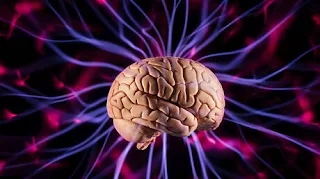In an innovative study published in the journal Science Advances, researchers revealed new insights into the complex relationship between emotion and cognition.
Emotion and cognition are closely linked, with emotional experiences often arising from the evaluation of sensory information. However, it is unclear whether the brain encodes emotional states using a specific sensory code or in a more abstract way.
Led by a team of Italian neuroscientists from the IMT School of Advanced Studies in Lucca, and in collaboration with the University of Turin, the researchers studied whether the brain uses specific or abstract sensory symbols to construct emotional experiences.
“Emotion and cognition are deeply intertwined, but the precise mechanisms by which the brain represents emotional states have remained elusive,” says Giada Lettieri, a research psychologist at the IMT School and lead author of the study. “Our research addresses this fundamental question, providing critical insights into how the brain organizes and represents emotional states.” Emotional information via different sensory modalities and as a result of previous sensory experience.”
To conduct the study, researchers showed the movie 101 Dalmatians to a group of 50 volunteers, and using functional magnetic resonance imaging, they tracked brain activity associated with uncovering the movie's plot.
The film viewers in the scanner were individuals with typical development and congenitally blind and deaf volunteers, who were presented with audio playback and the silent version of the film, respectively.
The researchers also asked a group of 124 independent participants to express and rate their emotions while watching the same movie outside the scanner, in an attempt to predict the brain response of people with sensory deprivation while experiencing amusement, fear, and sadness, among other emotions.
Luca Cicchetti, a researcher at the IMT School and senior author of the study, revealed: “Our results show that categories of emotions are represented in the brain regardless of sensory experiences and modalities. In particular, there is a distributed network that includes the sensory, frontal, and temporal regions of the brain, which encode Collectively emotional states.”
Emotional states are encoded in a vast network that includes the sensory cortex, frontal and temporal lobes. Within this network, the ventromedial prefrontal cortex stores an abstract representation of emotions independent of modality and prior sensory experience, and the posterior superior temporal cortex maps the valence dimension using an abstract symbol.
According to the study, the presence of an abstract coding of emotions in the brain indicates that although we tend to believe that our emotions depend directly on what is happening in the surrounding world, it is our brain that works to generate emotional meaning regardless of whether we are able to see or Hear it or not.
Tags:
brain builds
brain nerves
brain senses
emotional health
first brain signal
human brain works
science




Brilliant 😊
ReplyDeleteGood 93
ReplyDeleteGood
ReplyDeleteThe film viewers in the scanner were individuals with typical development and congenitally blind and deaf volunteers, who were presented with audio playback and the silent version of the film, respectively.
ReplyDeleteGood
ReplyDelete